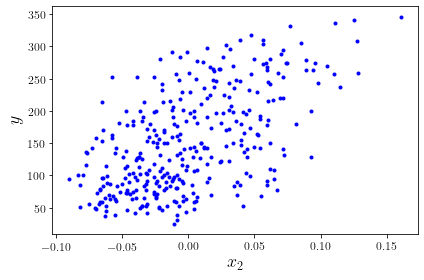
So the core output of our regression analysis are 2 numbers: So if we get an applicant with an IQ score of 100, our best possible estimate for his performance is Predicted performance = 34.26 + 0.64 * IQ. This output tells us that the best possible prediction for job performance given IQ is Let's first have SPSS calculate these and then zoom in a bit more on what they mean. Since X is in our data -in this case, our IQ scores- we can predict performance if we know the intercept (or constant) and the B coefficient. Now the exact relation requires just 2 numbers -and intercept and slope- and regression will compute them for us.Īny linear relation can be defined as Y’ = A + B * X.

We'll do so by assuming that the relation between them is linear. There's a strong linear relation between IQ and performance. Despite our small sample size, it's even statistically significant because p < 0.05. That is, our scatterplot shows a positive (Pearson) correlation between IQ and performance.Īs shown in the previous figure, the correlation is 0.63. So anyway, if we move from left to right (lower to higher IQ), our dots tend to lie higher (better performance). For instance, the highest point (best performance) is 1 -Kevin, with a performance score of 115. Note that the id values in our data show which dot represents which employee. The solution to this is creating a scatterplot as shown below. However, this is difficult to see with even 10 cases -let alone more. Looking at these data, it seems that employees with higher IQ scores tend to have better job performance scores as well. They did so on 10 employees and the results are shown below. The very first step they should take is to measure both (job) performance and IQ on as many employees as possible.


The point here is that calculations -like addition and subtraction- are meaningful on metric variables (“salary” or “length”) but not on categorical variables (“nationality” or “color”).Įxample: Predicting Job Performance from IQĬan we predict job performance from IQ scores? Remember that “metric variables” refers to variables measured at interval or ratio level. Simple linear regression is a technique that predicts a metric variable from a linear relation with another metric variable. Simple Linear Regression – Quick Introduction By Ruben Geert van den Berg under Regression & Statistics A-Z


 0 kommentar(er)
0 kommentar(er)
